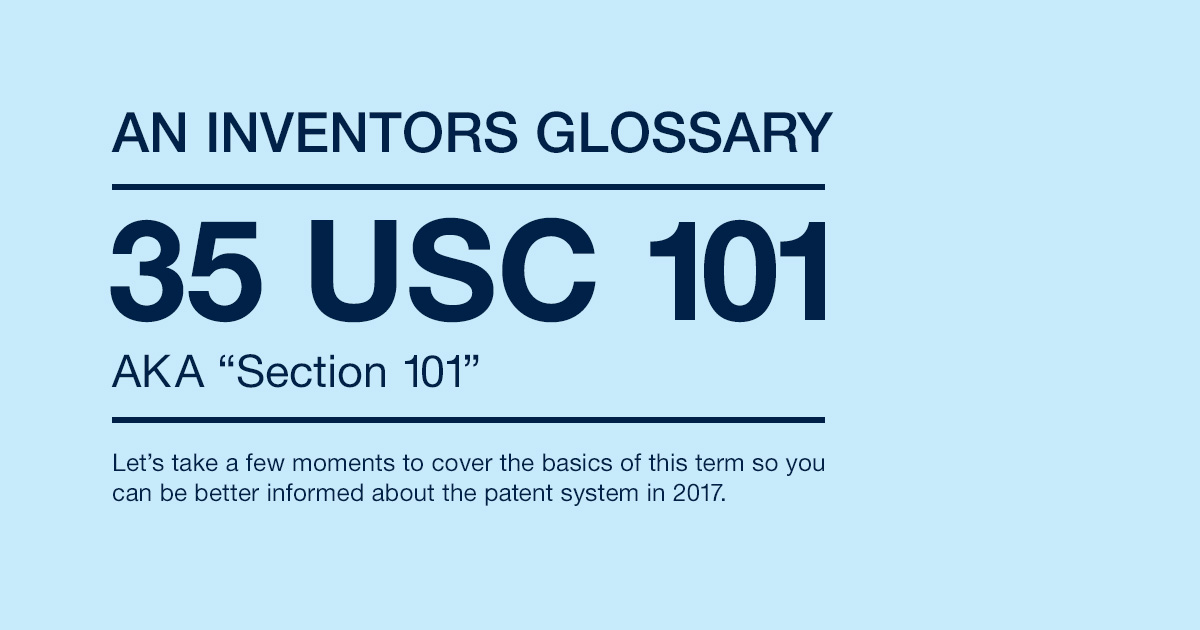An Inventor’s Glossary: 35 USC 101, aka “Section 101”

If you keep up with intellectual property and patent news, you’ve likely seen the words “35 USC 101” or “Section 101.” Set among a myriad of complex abbreviations, acronyms, and terms, you’d be forgiven for not fully understanding what 35 USC 101 is or why it matters to patent holders and inventors in the United States.
Let’s take a few moments to cover the basics of this term so you can be better informed about the patent system in 2017.
What is 35 USC 101, also known as “Section 101"?
Section 101 is the part of the United States Code, thus the “USC” in “35 USC 101,” that determines what is and what is not eligible to receive a patent. It reads, “Whoever invents or discovers any new and useful process, machine, manufacture, or composition of matter, or any new and useful improvement thereof, may obtain a patent therefore, subject to the conditions and requirements of this title.”1
Why is it referenced so often in patent news and debates?
Recent Supreme Court decisions, such as Alice vs CLS Bank International, have led to a more limited interpretation of Section 101’s definition of patent eligible subject matter under the law. Because of these decisions, many previously-issued patents, specifically in software and life sciences, have had their validity challenged, and many innovators have been left unable to patent their inventions.
What does this mean for inventors?
Currently, the ambiguity around what is and what is not considered patent eligible subject matter is what worries inventors and innovators most. Without confidence in a patent’s staying power, the incentive to invest and innovate evaporates very quickly. This can have disastrous economic effects beyond inventors and patent-holders.
Further reading on 35 USC 101 can be found here:
- http://patentlyo.com/patent/2016/04/section-subject-eligibility.html
- http://www.ipwatchdog.com/2016/12/01/supreme-courts-section-101-jurispru...
- http://innovationalliance.net/from-the-alliance/inventing-america-ip-wat...
Want to support inventors? Spread the word about how Congress needs to clarify Section 101 to ensure that our patent system continues to drive economic growth and create jobs for Americans. Click to tweet.
